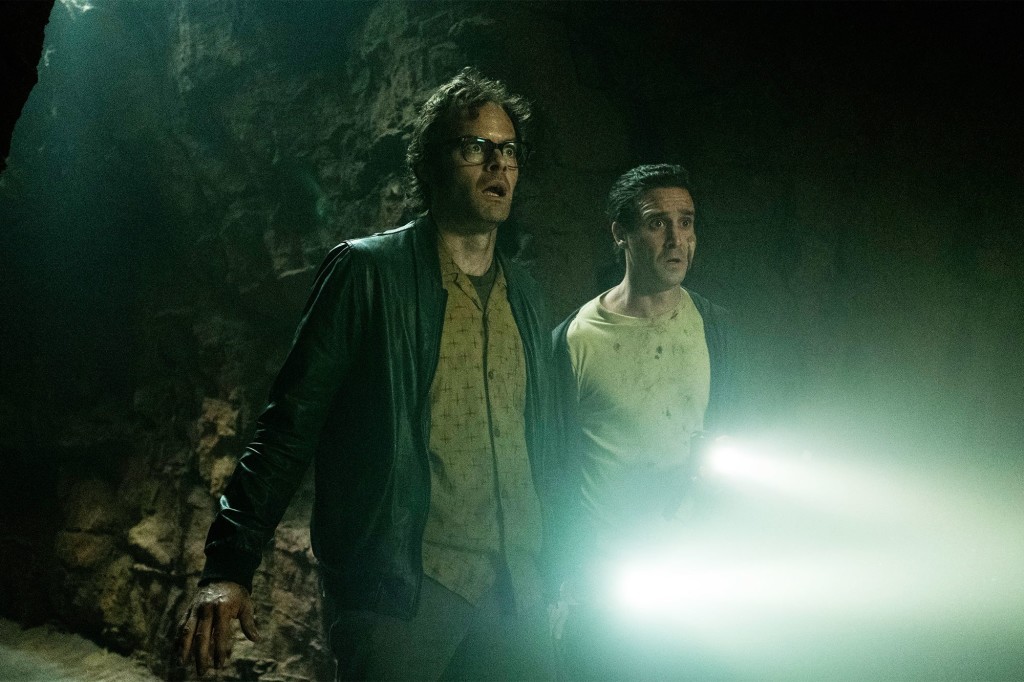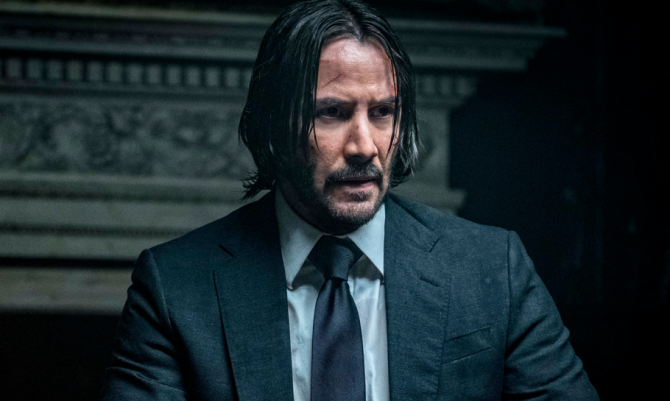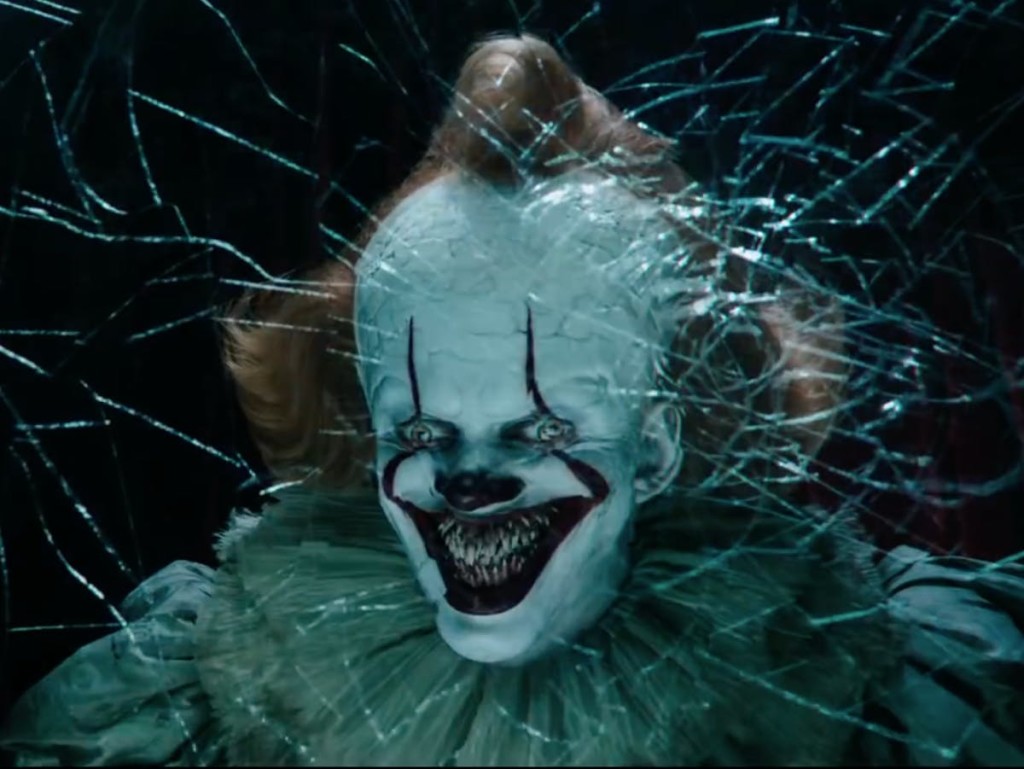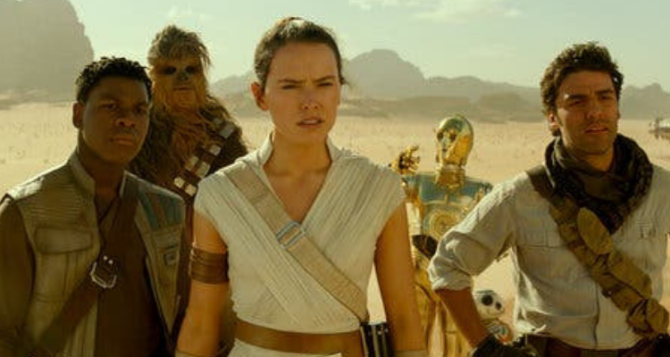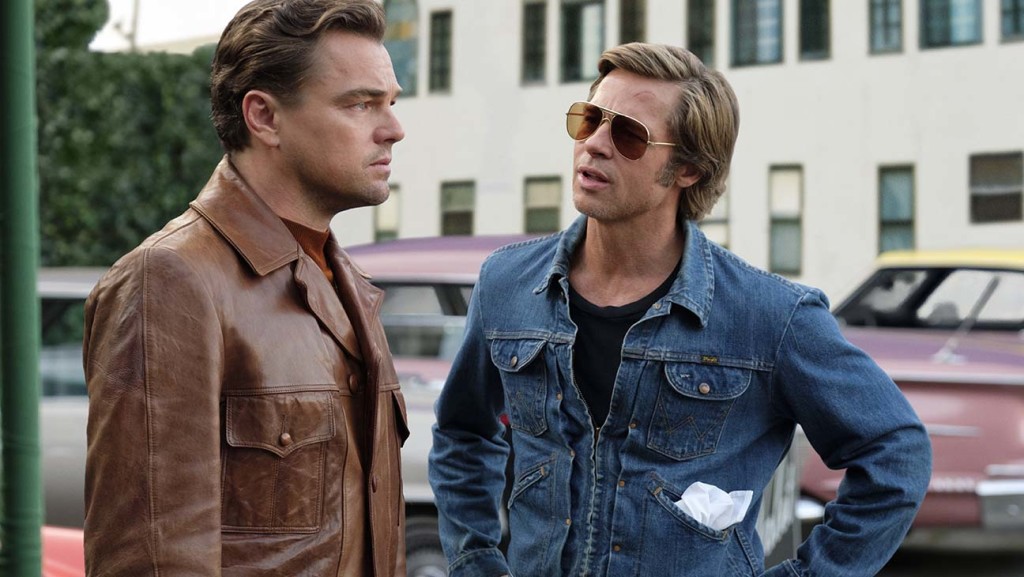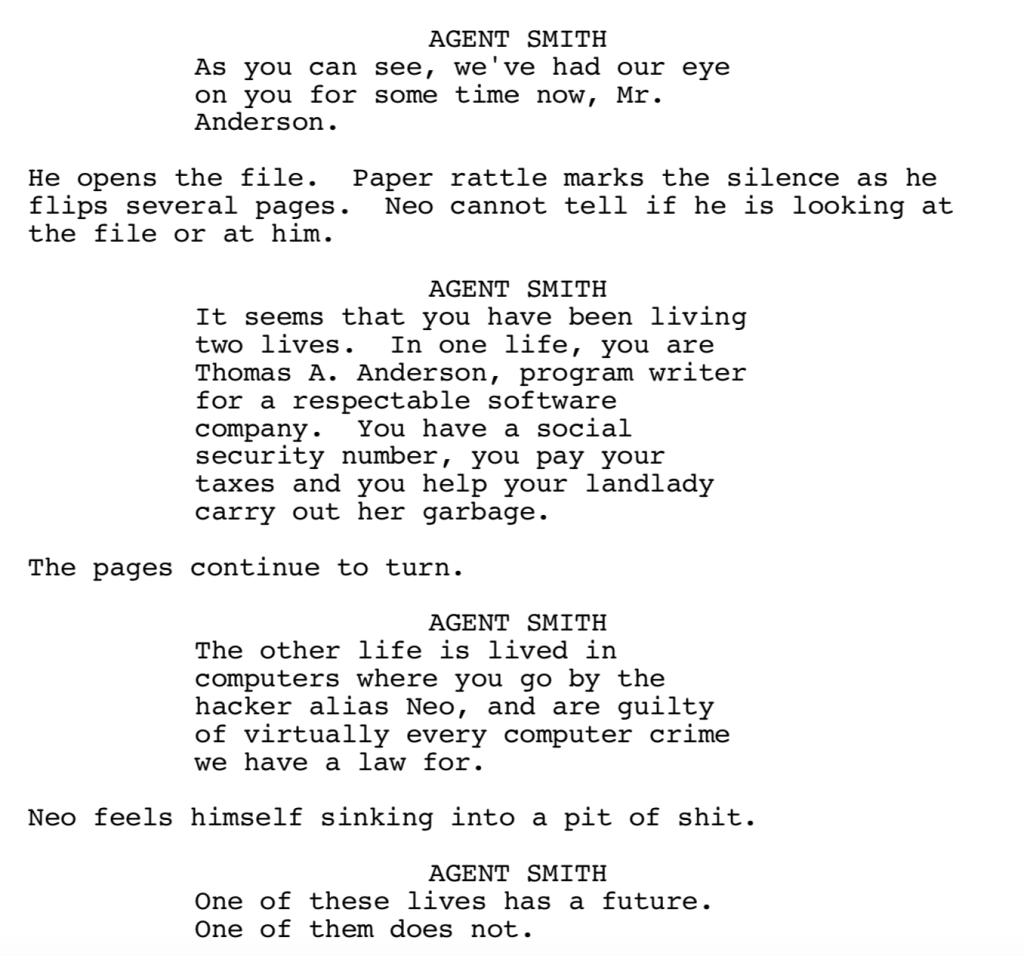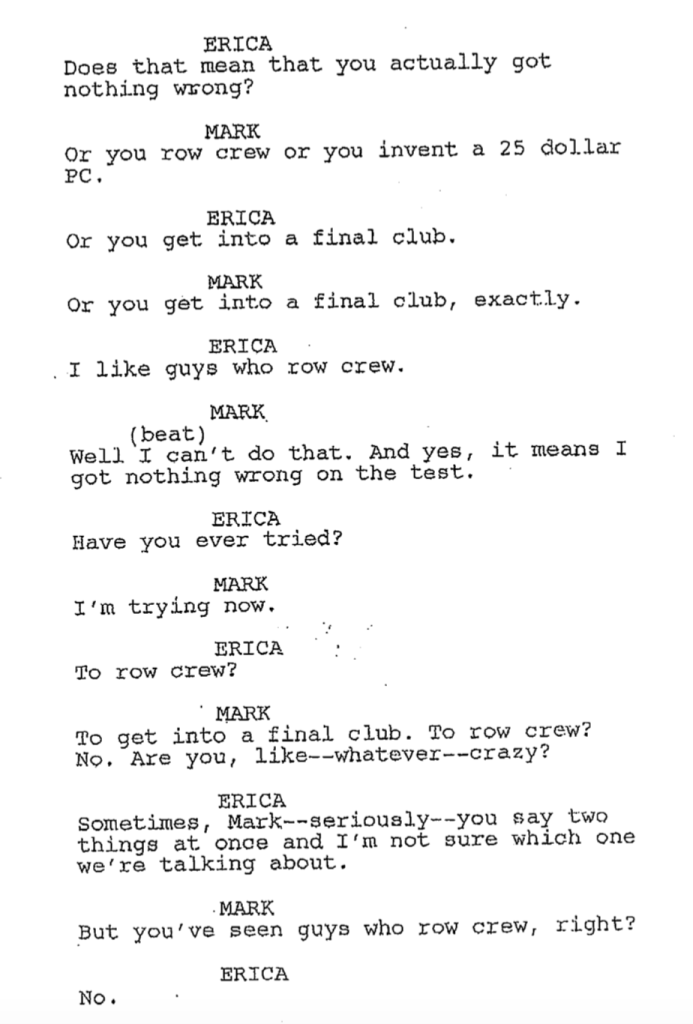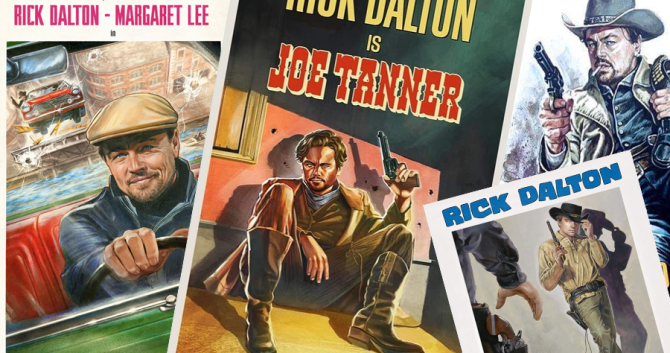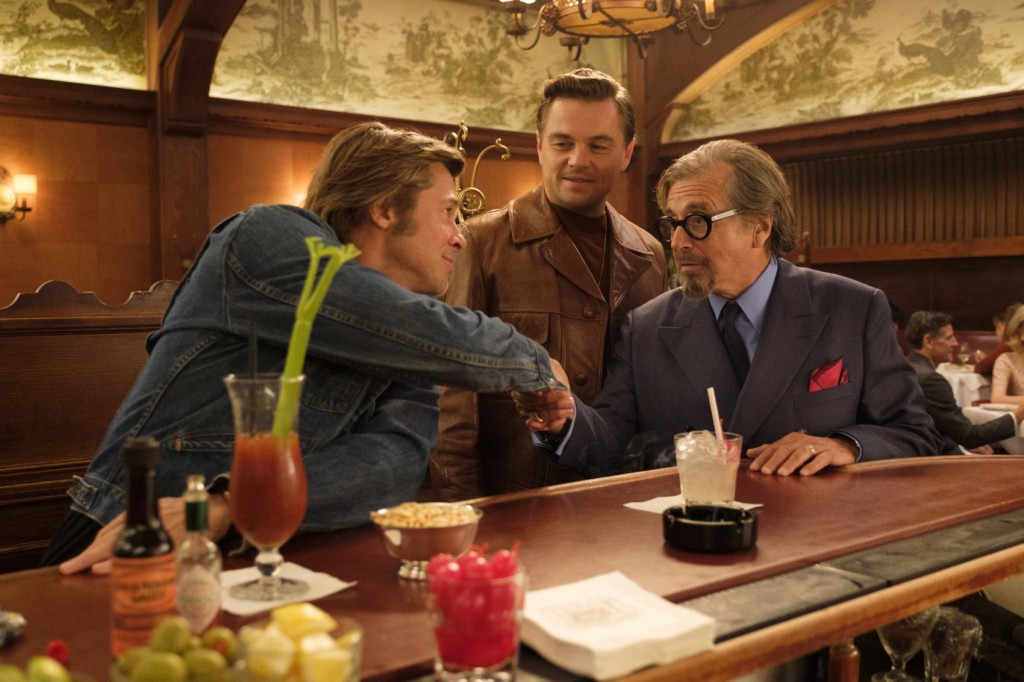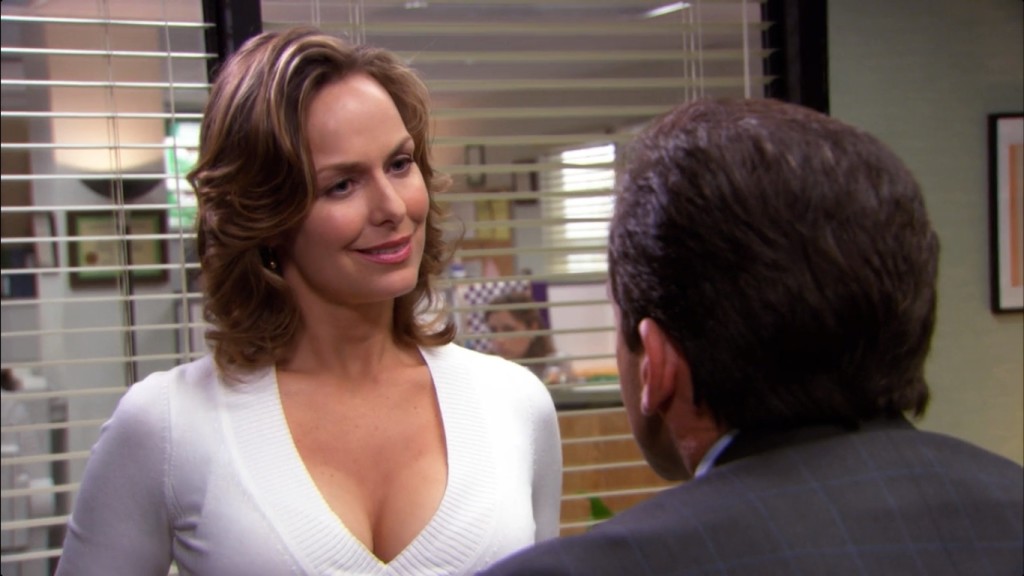Search Results for: 10 tips from
Genre: Sports Drama/Sort of true story?
Premise: A struggling American sports agent mired in debt flies to Cuba to recruit their most famous baseball player.
About: This script finished on both The Black List and Hit List last year. It comes from the writers of BLACKKKLANSMAN, two New Jersey natives who were childhood best friends.
Writers: Charlie Wachtel & David Rabinowitz
Details: 120 pages
Didn’t they already make this movie? Wasn’t Jon Hamm in it?
Look, let’s be real. Sports dramas are tough sells. And they’re even tougher sells when they center around baseball. So props to these writers not only for taking a risk with this genre, but getting their script on both the Black List and Hit List.
But the one thing I tell writers who write sports dramas is, “Unless it’s boxing, make it a true story.” So I was happy that today’s writing team did that. Or… did they? As I read through Bolsa Negra, I spent much of the script confused. There were several real life baseball figures in the script, but I think this entire story is made up. That feels kinda cheap considering this is a really intense story. People die. And if you’re mining fake death emotion under the guise of real life, that’s as dirty as the shady world you’re covering.
But anyway…
It’s 1996 and 38 year old Steve Santos is the Cuban-American Jerry Maguire. Without the slick suit. Or the nice car. Or anything of value, to be honest. Steve is barely able to make ends meet. Which is why he has to get creative.
Steve has his eye on someone named El Coco (“The Boogeyman”), the best player in Cuba, a hotbed for amazing baseball talent. However, most of those players end up staying in Cuba because it’s impossible to get them out (this is when the U.S. and Cuba were mortal enemies). But Steve naively heads there anyway, thinking he can throw a few Benjamins around and he and El Coco will be back on the red-eye.
As you might expect, it doesn’t go that way.
First, Steve has to pay his Cuban guide to help him get around. Then he has to convince El Coco to actually come with him, which is far from easy since he needs to bring his entire family along or they get thrown in jail. Then he needs to meet someone named “The Professor,” who can facilitate the complicated process of getting them off the island. Then he has to find a boat and a driver. Every step is complicated by the fact that THEY ALL WANT MONEY. And Steve ran out of money the day he showed up.
Somehow, Steve gets El Coco and his family on the boat and they head to Cancun, Mexico (they can’t go straight to the U.S. since baseball regulations will put El Coco in the draft, where he’d make MUCH LESS money – if he comes to America through Mexico, El Coco will be a free agent – and that’s where he can negotiate a 20-million dollar contract).
Once in Mexico, they meet up with the professor’s Mexican contacts, a harmless older couple. WHO THEN PROCEED TO KILL STEVE’S BOAT DRIVER! So, yeah, I guess not so harmless. When they find out how much El Coco is worth, they up their fee 2000% (yes, three zeroes). They then quarantine Steve, El Coco, and the family, while Steve gets on the phone with six major league teams and negotiates the deal of his life. Literally.
Outside of the bait-and-switch “true story,” this was fun. From the way it was structured to the way it was executed, the writers have a strong feel for the intricacies of the craft. For example, once we get to Cuba, they give their hero a series of mini-goals. First Steve has to convince El Coco to come. Then he has to secure a facilitator. Then he has to find a boat.
Now remember, when it comes to mini-goals, you don’t want everything to go smoothly. You need PROBLEMS to arise. These story disruptions add a spontaneity to your screenplay that’s exciting to read. For example, while Steve was getting his ducks lined up, a corrupt Cuban officer showed up at his place and demanded a cut or else he would kill Steve. This forced Steve to accelerate the process, upping the script’s intensity considerably.
As you know, good plotting is great. But good plotting with strong characters is better. And I liked that Steve was fallible. This was not the most likable guy. He was cheap. He was sketchy. He’s making deals left and right he knows he can’t pay up on. You get a little extra screenplay street cred when your protagonist is an anti-hero. Most screenwriters are out there desperately combing websites (like this one, admittedly) for ways to make their hero the most likable person on the planet. And that’s because when you’re writing for mainstream Hollywood, it’s virtually required that your hero be likable. There’s a certain “Eff U” quality to a writer who bucks that trend. And Steve is definitely an anti-hero.
But the thing that really sets this script apart is its climactic scene. You have a sports agent in a seedy Mexican hotel room with a gun to his head negotiating on the phone with six major league baseball teams. The “harmless older couple” are putting a bullet in his noggin if the signing bonus isn’t the number they agreed on. It’s one heck of a ride and a great finale.
My big beef with the script is that it didn’t incorporate Steve’s background into the story location at all. Steve’s parents were Cuban but he’d never been to Cuba. Steve goes to Cuba for the story. Yet there’s no conflict whatsoever with his heritage. And I know this because the story doesn’t change one bit if the character is American and Caucasian.
There’s no screenwriting law that says when a character is from a country he’s never been to and the story takes place in that country, that he has to have some conflicted relationship with the place. But doesn’t it seem odd to totally ignore that reality? It screams that you could’ve gone deeper but you didn’t want to do the work.
And I get it. Writing a screenplay is hard. You might spend one draft putting everything into the plot. Another draft getting the dialogue to sing. Another draft giving all the supporting characters more oomph. Another draft fixing all of the slow spots in the script. And on and on. And then, after all that, someone says, “You know what would make this even better? Is if he had conflict with the country he never embraced.” And you’re like, yeah, that would be better. But you know what? I’m effing done. I don’t want to write any more drafts.
Well I’m here to tell you to write that extra draft. Because the competition out there is insane. Writing something that sticks out is one of the hardest things you’re ever going to do. So if you only give 90%, that’s probably not going to be good enough. Anybody can give almost all of themselves and create something good. But only the writers who give 100% of themselves are going to create something great.
[ ] What the hell did I just read?
[ ] wasn’t for me
[x] worth the read
[ ] impressive
[ ] genius
What I learned: “Houston, we have a problem.” One of my favorite screenwriting tips is “We have a problem.” If things are getting boring in your story, have one of your characters say, “We have a problem.” You don’t need to know what the problem is when you write that line. Whatever comes to mind afterwards, use it. Problems are exciting. They take your story in a new direction. They force your hero to act. And they usually up the stakes. So it’s instant script heroin.
This week started off on a bad note.
It: Chapter 2, a movie I once proclaimed had the potential to be the best movie of the year, turned out to be a big stinking bag of garbage. You know what kind of garbage I’m talking about. The kind where you clean out your fridge into the garbage bag but you still wait a few days before taking the bag out? Yeah, well It: 2 was SO BAD that if I were given the choice to either smell that bag for thirty minutes or sit through that 3 hour movie again, I would choose the bag.
However, then, like an angel coming down from the heavens, the Joker script arrived. How amazing was this script? It received a “double impressive!!!” I’ve given out four “double impressives” in the totality of Scriptshadow. What was interesting about reviewing these stories back to back is that I was directly able to contrast why one plunged and the other soared. Joker was great due to its utterly simple structure. It followed one man on a simple and clear journey. “It 2,” meanwhile, covered an endless number of characters, which sent the narrative in a million different directions, leaving us with a sprawling mess of a story. This, I proclaimed, is why you should always favor SIMPLE STORIES.
But there were a number of you who argued that there are lots of movies with multiple protagonists that are great. The first “It” had multiple characters and it did well. Then you have Avengers, Guardians, Fast and Furious, X-Men, Star Wars, Toy Story, Glass, Good Boys. It could be argued that Hollywood FAVORS the multiple-protagonist approach. Well hold on there, Sally. We still have John Wick, Captain Marvel, Spider-Man, Aladdin, and Shazam! to name a few of the big movies this year. But there is truth to the idea that more movies contain larger casts with sprawling stories. And that if you want to be a big-league writer – I’m talking one of these A-listers making 7 figures an assignment – you need to know how to write big sprawling complex scripts.
So let’s get the obvious out of the way. A script with a single hero is going to be easier to write. Period. If you have one hero, you only need to worry about one plot goal and one character transformation. Therefore you can focus all of your creative energy on making those perfect. That’s what Joker did. Arthur wanted to be a famous comedian. That’s his goal. His transformation revolved around an inability to connect with the world and the lengths he would go to make that connection. Boom. Perfect.
Once you move to a property like Avengers, you’re having to worry about that x 7. But let’s get something clear. Marvel is an enigma. It has two advantages nobody else has. It’s dealing with characters with 50+ years of history who the average person already knows. And they treat their films like TV shows, not movies. They’re connected. This means that by the time we get to an Avengers movie, we know everyone intimately. And that means the writers don’t have to spend precious time setting characters up or giving you important backstory, all of the things that can weigh a screenplay down. All they have to do is convey the plot clearly and occasionally check in to make sure you know what’s going on.
Bringing this back to today’s argument, you’ll never have that Marvel security blanket if you yourself write a multi-protagonist script. You’ll have to meticulously set everyone up, which will take seven times as long because you’ve got seven main characters instead of one. And then, once that’s over, you’ll have to set up what your characters are actually trying to do. And once that’s over, you have to bounce back and forth between each storyline in a way that keeps all the storylines going without us forgetting about or getting confused about what’s going on. You are also battling the juggernaut known as pacing. This is what destroyed It 2. Technically, we knew that each of the characters was trying to get their individual artifact. So there were clear character goals for everyone going into our second act. But each storyline was so similar and so monotonous that it began to feel like a relay race with the school’s slowest runners. Now it’s your turn to be see something scary. Now it’s your turn to see something scary. Now it’s your turn to see something scary. When I talk to people about that movie, that’s the section where they all say they checked out.
The problem that they run into and that you’ll run into when you try and write a big sprawling script, is that, inevitably, three or four of your characters won’t be that interesting. So now you’re stuck giving uninteresting characters full on scenes and it isn’t working because the characters are inherently flawed. Who cares about the fat kid turned hunk? Who cares about Eddie? Who cares about grown-up Beverly Marsh? She’s a dud. When you’re writing a single-hero story, you can put all of your time and effort into making that character the greatest most compelling most interesting character ever so that we’ll want to be around them every single second. This is how scripts like Nightcrawler get written.
HOWEVER, if you absolutely must write a big sprawling complex story with lots of characters, I have a few tips for you. First, use a MacGuffin. Create one thing that everybody is after. Greatest MacGuffin ever? The Ark of the Covenant. If you have a great MacGuffin, it ensures that the audience always knows what your characters are after. Whether it’s in minute 20 or minute 80, we know they’re still after that MacGuffin. And that makes up for one of the complex movie’s biggest weaknesses – its lack of focus. With a big clear MacGuffin, you can make your complex movie almost as focused as a John Wick.
Next – make sure the setup behind your characters’ motivations makes sense. The worst thing that can happen in a big sprawling movie is for the audience to start questioning why the characters are doing what they’re doing. This is what separates the great “It” from the terrible “It 2.” In the first movie, they’re kids who are STUCK IN THEIR TOWN when an evil clown starts hunting them. Think about that for a second. Kids can’t leave their homes. They are prisoners to their town until they’re old enough. This is why “It” worked so much better. Our characters had no choice but to fight the clown.
Contrast that with It:2 where the characters are all adults, and therefore can leave whenever they want. Now I know what a few of you are thinking. “No Carson. If they leave the town, they’ll die.” Says who? How do they know that? Where’s the proof? There isn’t any. The only reason you’re saying that is because a character said it. And the only reason a character said it is because the writer realized they had to come up with a reason why these people didn’t just hightail it out of here. So MAYBE if they try and leave, they die. Maybe. Cause somehow Pennywise has that power. Maybe. — When you start forcing desperate shaky reasoning into your character’s mouths to cover up plot holes, I got news for you buddy. Your script is in major trouble. You want your logic and motivation built into the story’s foundation, like “It” had.
Finally, if at all possible, avoid fractionating your characters. JJ Abrams hasn’t talked about Rise of Skywalker much. But one of the things he made very clear was that all the characters were going to be on an adventure together this time. This is because JJ understands that the more you divide your characters up, the more potentially confusing and rambling your story gets, and the more likely you’re going to come up with a dud sub-plot, like Canto Bite. So here’s the rule. Keep all your characters together if possible. If you’re going to split them up, limit it to two groups. It’s still possible to come up with two awesome parallel plotlines in a single movie. However, if you decide to divide your big group into three or more sub-groups, you might as well call your local funeral home and ask them if you can get an early discount on a casket. It’s not that it can’t be done. And I’m not talking about splitting individuals up, which is often done during the climax of, say, a horror film. But if you’re writing one of these big sprawling movies with multiple plotlines and multiple groups of characters, the level of screenwriting expertise required to pull that off is higher than you can imagine.
This is why I tell every aspiring screenwriter: Don’t write The Godfather before you’ve proven you can write Rocky. Don’t write The Departed before you’ve proven you can write Taken. Don’t write Inception before you’ve proven you can write The Terminator. And don’t write The Dark Knight before you’ve proven you can write “Joker.”
Yo, do you have a logline that isn’t working? Are those queries going out unanswered? Try out my logline service. It’s 25 bucks for a 1-10 rating, 150 word analysis, and a logline rewrite. I also have a deluxe service for 40 dollars that allows for unlimited e-mails back and forth where we tweak the logline until you’re satisfied. I consult on everything screenwriting related (first page, first ten pages, first act, outlines, and of course, full scripts). So if you’re interested in getting some quality feedback, e-mail me at carsonreeves1@gmail.com with the subject line: “CONSULTATION” and I’ll get back to you right away!
The art of dialogue.
Whereas every other component of screenwriting can be taught, dialogue remains a shapeless colorless mist, something we keep trying to grab onto, yet continually come up empty.
How elusive is dialogue? Do a Google search right now. Try to find one article about dialogue that has a tip in it that you haven’t heard 17 million times already.
These people who claim to be dialogue experts can only recite the same tips Syd Field spouted 30 years ago in his best-selling screenwriting book. Come into a scene late. Leave early. Use as little exposition as possible. Blah blah blah. Oh, and here’s my favorite one: Listen to how people talk.
Oh yeah, yeah. I’ll listen to how people talk. Because people talking for 45 minutes is exactly the same as needing to write a two minute conversation in a movie.
Probably the most confusing story about dialogue that I’ve ever come across is the Thor: Ragnarok line. After professional screenwriters making millions of dollars for their months and months of work put Thor: Ragnarok together, they’re shooting the scene where Thor is about to fight someone in a gladiator arena, and out comes the Hulk. Hemsworth says the lines in the script. He then tries a few improv lines. Then there’s a Make-A-Wish kid on set that day. And he says to Chris Hemsworth, “Why don’t you try, ‘I know him. He’s a friend from work.’” Hemsworth does the line, and it not only ends up in the first trailer for the movie, but it becomes the centerpiece of the trailer and its most memorable line.
I want you to think about that for a second. A young kid, somewhere between 8-11 I’m guessing, was able to come up with the most popular line in a movie written and rewritten and developed and re-developed by Hollywood professionals, people supposedly at the very top of their profession.
Messes with your head, right?
Well, here’s what I’ve determined. While there is a randomness to dialogue that contributes to its elusiveness, there is a way to get better at it. There are five areas that influence your dialogue. And that four of them are under your control. The fifth, unfortunately, is not. But, if you can master the other four, you can write good dialogue. So what are these five things?
Know the Basics – Yes, I just made fun of this above. But you do need to learn dialogue basics in order to not make beginner mistakes. Yes, you need to come into scenes late. Yes, you need to leave scenes early. This will ensure that your characters only say what they need to say to move the story forward. Yes, you need to know what on-the-nose dialogue is. You need to understand what exposition is and how to keep it short and sweet. There’s quite a few basic lessons to learn. But a simple google search should have you covered, since they’re the only dialogue rules anyone on the internet knows.
Scene prep and conflict – I talked about this in my first and second dialogue articles in this series. You need to learn how to prep scenes that allow good dialogue to flourish. Understanding how to create a character goal in a scene, how to have the other character be in the way of that goal. Which leads us to conflict. You have to understand how conflict (and tension) works, the many different variations of it, because it is the driving force of most good dialogue. If there isn’t some imbalance in what the two characters want in a scene, their dialogue will be agreeable and mostly boring.
Tricks – Dialogue tricks come from experience. They’re little things you learn along the way that you can pull out whenever you need them to write good dialogue. An example of a trick is instead of having your hero talk about himself, have the other character in the scene do it. It’s almost always more natural. Watch the scene in The Matrix where Agent Smith interrogates Neo. It’s Agent Smith reading off Neo’s life. Neo doesn’t tell him anything. Creating characters that contrast is another. The more your two main characters contrast, the more biting their interactions will be, which will lead to better dialogue. There are tons of tricks to learn. The more you know, the less dialogue situations you’ll encounter that you don’t have answers for. Feel free to leave your dialogue tricks in the comments section.
Characters – Probably the single most important component outside of talent for writing good dialogue is character creation. You need at least some characters in your script who have personality, who like to talk, who have opinions, who are interesting in some capacity. If you insert boring characters who are passive or don’t like to talk or aren’t interesting or don’t have anything to say, the chances of you writing good dialogue are next to zero. Here’s an exercise. Write one scene with The Driver (Ryan Gosling’s character in Drive) and write another with Jack Sparrow. You tell me which scene was easier to write dialogue for. Or it doesn’t have to be as exaggerated as Jack Sparrow. It could be Louis Bloom from Nightcrawler. Or Alonzo from Training Day. Or Mark Zuckerberg from The Social Network. When you create an interesting character who likes to talk, he/she will do most of the work for you. If you don’t, you’re going to be pulling your hair out trying to come up with interesting things to say for that character.
Pure Talent – Aaron Sorkin, Diablo Cody, Woody Allen, Quentin Tarantino, David Mamet. I’m sorry to tell you this, but you will never be these people. They possess a unique talent that allows them to think of things and say things in a certain way that makes their dialogue leap off the page. It’s incredibly frustrating to read a script from one of these people because you know you’ll never be that good. However, there ARE some things you can to do to momentarily upload yourself into the Dialogue Matrix, the place where these kings and queens exist. And if you can get here for even 15 seconds every once in awhile, that may be enough to come up with an amazing line, or a great exchange. To start, you need to realize that dialogue is the most artistic part of screenwriting. Therefore, you must turn off your conscious mind and access your unconscious mind. That means no thinking. That means no judgement. And it means a lot of free-writing. These geniuses write their dialogue mostly on instinct so if you’re not doing the same, you don’t have a shot. Go nuts. Have your characters say whatever comes to mind. You’re more likely to come up with a killer line this way than trying to logic-it into existence. The other thing I get from these writers is that there’s more of a sense of discovery in them. They enjoy trying to find the moment and the characters through their dialogue. Likewise, there’s a playfulness when they write dialogue. Like a kid playing with toys. They’re having fun and seeing what happens. In addition to this, they have a thirst for knowledge and history. They want to know more about the world and how it works. This allows their characters to be smarter and have more ideas to draw from. And they work from a place of, “I’ll edit it down later.” They don’t try to nail it in one go. Sometimes they will. But mostly they’ll write what comes to mind and cut it down to fit in the story later. And this is what allows them to have so many great dialogue moments. With all that exploration, they have more meat to work with.
Dialogue is difficult. But this idea that you’re either good at it or not is false. If you can master the first four areas – ESPECIALLY THE FOURTH – you can definitely get good at writing dialogue. From there, keep working on five. Do what you can. You’ll never surpass the masters. But if you can get to their level every once in awhile? That’s enough.
Genre: Drama
Premise: A fading moving star and his trusty stuntman navigate the perils of Hollywood in 1969.
About: Psychologically, it was imperative that Once Upon a Time in Hollywood cross the 40 million dollar mark this weekend. So thank goodness it was BARREELLLLY able to do so, grabbing 40.2 million dollars. The film has been working up a big lather of discussion and I hope to add to that today.
Writer: Quentin Tarantino
Details: 2 hours and 45 minutes
[MAJOR SPOIIIIILLLLLLERRRSSS]
Quentin.
Vs.
Marvel!
Don’t ignore the reality. This is what this really is. This is original auteurs versus the giant moviemaking machines. I remember people complaining when Star Wars and Jaws came out. “Oh no! Now it’s going to be all about the blockbuster!” And, yes, it eventually became about the blockbuster. But that’s nothing compared to today. Today it’s about the superstar IP franchise-starting make-stockholders-happy mega movie. And nobody embodies that better than Marvel.
Which means that whether you like Quentin Tarantino or not, you should support him. Because the fewer of him there are around, the closer we are to an all-Marvel Hollywood. And don’t get me wrong. I like most Marvel movies. I’d just like to have the occasional choice, you know.
Once Upon A Time in Hollywood is set in 1969 and Rick Dalton, the star of a popular Western TV show called “Bounty Law,” has since tried his luck at becoming a movie star. However, it’s not going well. With each passing part, he’s getting cast more and more as the bad guy, which means he’s just there to get killed. This has driven Rick to lots of drinking.
Rick’s best friend is his stunt double, Cliff Booth. Cliff stopped getting work when rumors began swirling that he murdered his wife. Therefore, the only time Cliff gets to be a stunt double is when Rick demands that they hire him. Meanwhile, Cliff drives Rick around and takes care of his house.
Sharon Tate, who was infamously murdered by the Manson family, is an aspiring actress here who just happens to have moved into the house next to Rick’s with her husband, Roman Polanski. Rick often ponders the randomness of the world and how if he could just bump into them, he would go from Rick Dalton, TV extra, to Rick Dalton, starring in a Roman Polanski movie. But alas, that will never happen. Will it?
If there’s a plot to be had here, it would be Rick’s journey to do good work. He’s trying, despite all odds, to become a movie star. So we follow him to movie sets and watch him try, with all his might, to give the best performances possible, in the hopes that somebody important will notice that he can still be the next Steve McQueen.
Wow.
I mean, is there a writer who’s more confusing to new screenwriters than Quentin Tarantino? On the one hand, you can use his scripts to convey some of the most useful tips in screenwriting. On the other, he does tons of things you should never allow a screenwriter to do. And I think this script highlights that better than most.
Take Rick Dalton (DiCaprio) and Cliff Booth (Pitt). What’s one of the first things they teach you in screenwriting class? That the main two characters who are teamed up in your story should have conflict with one another. That doesn’t mean Jackie Chan and Chris Tucker over-the-top conflict. It could mean Miles and Jack conflict from the movie, Sideways, where they don’t see the world the same way and are always banging up against each other about what to do.
Rick and Cliff have zero conflict with one another. They’re like two peas in a pod, the best of pals. And it stays that way THE WHOLE MOVIE. Now, ultimately, the only question that matters is, does it work? If we enjoy watching these characters together, it shouldn’t matter that there’s no conflict. And I enjoyed watching these two. But there’s another question we have to consider, which is, if Tarantino HAD created conflict between them, would we have enjoyed the movie MORE? And I think the answer to that question is yes.
There’s a moment in the script that hints at the idea that Rick isn’t trying hard enough to get Cliff stunt work. That maybe he only sees him as a 24/7 caddy. If that thread would’ve been explored more, and had Cliff grown some resentment towards Rick, I think their relationship might’ve been more interesting to watch. Instead they’re the bromance to end all bromances.
The individual character journeys were also interesting from a screenwriting perspective. The most obvious conflict in the movie comes from Rick Dalton, who’s battling his falling star. And, once again, Tarantino stays away from conventional structuring. In a conventional movie, you would have an upcoming role that if Rick Dalton nailed, the studio was going to sign him to a new 5 picture deal. This gives the story a goal and stakes. Instead, we just sort of travel around with Rick as he goes to set and acts. We’re not all that sure what the stakes are other then, if he does a good job, he’ll feel like he’s still “got it.” When people complain about the rambling nature of this story, this is what they’re talking about. If your main character isn’t trying to accomplish anything, the narrative focus is going to suffer.
Then there’s Cliff. Cliff isn’t trying to accomplish anything. Nor does he have any sort of internal conflict. He appears to be dependent on Rick for work. And yet he doesn’t seem scared about what would happen if Rick stopped getting work. If a character’s journey doesn’t have any stakes attached to it, then that journey will feel pointless. What’s crazy is that Cliff’s character has the tools to be compelling. Everybody believes that he killed his wife. Maybe he even did kill his wife. So if he’s out there trying to gain everyone’s respect back, if he’s trying to become a stunt performer who doesn’t need Rick Dalton to get work, then at least he’s moving towards something. But in the Bruce Lee scene (he fights Bruce Lee, which gets him kicked off the set), he’s completely unconcerned with losing that job. He’s even smirking about it. So if he doesn’t care about losing his job, why would I worry about him? Or what happens to him?
Finally, there’s Sharon Tate (Margot Robbie), whose character is another Tarantino Screenwriting Paradox. If you got rid of all of Sharon Tate’s scenes, nothing about the movie would change. And that’s another Screenwriting 101 lesson. If it’s not necessary for the story, get rid of it. BUT there’s a counter argument to this. Most people who go into this movie know Sharon Tate was brutally murdered in the Manson murders. Therefore, by keeping her in the movie, you’re building up an association between her and the audience, who knows her fate is coming. Therefore, when she lives instead of dies, all of that earlier time spent with her pays off. Cause we actually care that she lived. Had we not seen her at all, we wouldn’t have cared. Now could Tarantino have better connected her storyline to the plot? Probably. Could he have given her more to do than watch a movie in Westwood? I’m guessing yeah. So I do understand why people have a problem with her.
The truth is this script probably needed two more drafts. And I’m going to tell you how I know that. What is everyone’s biggest complaint about the film? It’s that there’s no plot. That we sort of drift around Hollywood without purpose. Now, what are the two sequences in the film everyone is talking about? They are when Cliff Booth goes to the Manson Farm and the ending scene where the Manson followers break into Rick’s house.
So what do those two things tell you? You need a plot and the thing that’s working best in your story is the Manson stuff. With a couple more drafts, Tarantino could’ve shaped this more around the Mansons. And here’s where screenwriting gets hard. I think Tarantino went into this script not wanting to center the story on the Mansons. To him, this was always about an actor and his stunt man. So even if the Manson stuff becomes the best thing in the script? He’s already created a bias by which he won’t center the story around it. All screenwriters do this. I’ve done it a dozen times myself. We write with a certain type of movie in mind, forgetting that the only rule in storytelling is to entertain. So if another, more exciting, story starts to present itself over the course of a screenplay, you have to follow that. Well, you don’t have to. But you probably should.
The ending of this script is its biggest talking point. Some people aren’t sure what to make of keeping Sharon Tate alive. What’s the message there? I actually think the ending is the most powerful moment in the film because here’s the thing about the Manson family. Everybody was obsessed with how nonsensical and random the murders were. And what I think Tarantino was trying to say was that they could’ve just as easily walked into a different house and the result would’ve been totally different. That a certain set of circumstances had to go right for them to be able to do what they did. Because these weren’t trained killers. They were clueless acid-tripping hippies. And had they walked into a house with a couple of big strong dudes, they might’ve gotten their a**es handed to them. Tarantino is showing just how random Hollywood and life is. That one little decision here or there changes EVERYTHING. In that ending, Rick Dalton does end up meeting Roman Polanski. And maybe he does become a movie star.
So where does this leave me on Once Upon a Time in Hollywood? Believe it or not, I loved it. Even with all my criticisms, Tarantino brings a knowledge and a love to filmmaking that you can’t quantify in sluglines and parentheticals. As much as the lack of plot hurt the script, it helped the movie. The less we thought about plot, the more realistic everything seemed. When characters aren’t saying things like, “We need to get the tesseract before Loki,” we’re less likely to remember that we’re watching a movie. And that’s what Tarantino does here. He brings us back to 1969 and presents a narrative that’s so easy-going, it doesn’t feel like a movie at all. It feels like we’re really there. And for me, it felt like like I was REALLY REALLY there, because I was. I watched this at the Arclight on Sunset, and 70% of Once Upon A Time was shot right in that area.
So it was just a very immersive experience. There are always screenwriting lesson to be learned from Tarantino. But I wouldn’t look too deep into what he’s doing here and say, “I’m going to do that, too.” This guy is operating on another level. But if there is a lesson to take away from this, I’d say that it’s, write about something you love more than anything. Cause it really comes through on the page when you do.
[ ] What the hell did I just watch?
[ ] wasn’t for me
[ ] worth the price of admission
[x] impressive
[ ] genius
What I learned: There’s a line of dialogue in the last scene of Once Upon A Time In Hollywood that exemplifies why Tarantino is so far ahead of everyone else. Major spoiler by the way. In the scene, ambulances and police cars have just left after cleaning up the Manson attack. Sharon Tate’s friend, Jay, standing behind the gate, spots Rick and asks what happened. Rick introduces himself. “Hi, I’m Rick Dalton. I live next door.” I don’t remember the exact response, so I’ll paraphrase it. Jay says, “Are you kidding? I know. Sharon Tate always says to me that if we ever need to take someone out, Jake Cahill from Bounty Law lives right next to us.” The fact that Tarantino went so far as to create a conversation off-screen that a character would then reference later in order to create a bond between two characters who have never met each other shows just how extensively he digs into his characters. It’s very likely Tarantino wrote some “off-screen” scenes, which are scenes between characters that won’t make the movie, but you do it as a writer to get to know the characters better. Does Jay have that line ready without that off-screen scene written? Probably not. Writers these days don’t take the time anymore, which is why we have so many empty surface-level films. Which is why we’re lucky to still have people like Tarantino working in the business.
Over the next five Thursdays, I’m going to be talking dialogue with the Scriptshadow Community. We’re going to be exploring the five main factors that go into writing strong dialogue, and today we’re starting with scene prep. The objective of this post is to show you how to prep a scene in order to get the best dialogue out of it.
Before we get into what you should do, it’s important to understand what not to do. As a screenwriter, we’re taught to look at scenes as situations that move our story forward. For example, as you plan your scene, you may think, “I have to have Chloe tell Jack about the time machine glove here so that when they meet up with Dr. Frank after the graduation scene, they can go back in time that night.” In other words, you see the scene as a means to communicate information as opposed to an entertaining experience in itself.
That’s the switch I want you to make in your mind. Of course you want your scenes to push the story forward. But what’s more important is that each individual scene be entertaining. It may be scary to hear but three boring scenes in a row and the reader is out.
The most basic step in dialogue prep is making sure that one character in a scene WANTS SOMETHING. The reason for this is that it gives your character purpose. And when a character is purposeful, his words have meaning behind them. Words without purpose, without meaning, are lifeless. To see this in action, write up some dialogue where two characters don’t want anything from each other. See what comes out. I’m guessing a bunch of boring nonsense.
Here’s where things get fun. Once you have a character who wants something, you can set it up so that the other character in the scene doesn’t want to give it to them. Go write a scene right now where Nick wants to break up with Tara but Tara doesn’t let him. I guarantee that scene is going to have better dialogue than if Tara agrees with Nick that they should break up. By following this simple formula, you’ve added CONFLICT to your dialogue. And conflict is where most great dialogue lies.
While this setup works great, not all conversation is this cut and dry. To be honest, if you only wrote scenes where one character wanted something and another character didn’t want to give it to them, the script would get repetitive fast. Conversation is more varied and nuanced than that. However, I want you to master this basic setup, because we’re going to use it as a jumping off point for all the other dialogue situations.
A close cousin to the “want – don’t want” setup is the “talk – no talk” setup. This is where one character wants to talk about something and the other character doesn’t. How many times have you been in a relationship or a marriage where you came home and your spouse hits you with the last thing you want to talk about in that moment? That’s an ideal dialogue situation right there. I actually think one of the most fun types of scenes to write is a “talk – no talk” where the secondary character literally says nothing the whole scene. Character A is the only person who talks in the scene. These scenes are always good.
Because conversation is so complex, these two setups are not going to be enough to complete the 40 odd dialogue scenes you’ll write in a screenplay. There will be a number of scenarios where neither character wants something and where both characters want to talk to each other. How do we still make the dialogue pop in those situations? It’s called the “Tension Question.” When dialogue lacks bite, simply ask the question, “Where is the tension coming from?” If you don’t have any, the dialogue will lack spark.
An example of tension is sexual tension. I was watching The Office the other day and Michael Scott was talking to his female boss and neither of them wanted anything from each other. But the scene worked because there was sexual tension bubbling up underneath their conversation. You could even make the same scene work if the sexual tension was one-sided. AS LONG AS THERE’S TENSION. That’s how important the Tension Question is.
Yet another great dialogue setup is to introduce an external problem into the scene. A problem forces your characters to work the problem out. But wait. Doesn’t that violate our first dialogue commandment, which states that our characters can’t want the same thing in a scene? Actually, the tension comes from a slight adjustment. They may want the same thing, BUT THEY’LL HAVE DIFFERENT OPINIONS ON HOW TO GET IT. Have you ever tried to lift something really heavy with people you barely know? Within seconds, you’re getting wildly differing opinions on how to execute the task at hand: “No no no, you got to be in front.” “Wait, you should put your hands here, not there.” “You’re the tallest so you should be in back.” If characters want the same thing, they should have differing opinions on how to get it. That’s going to inject the necessary tension.
These final three structural tips aren’t required for great dialogue, but if your dialogue is lacking punch for some reason and you can’t figure out why, try throwing one of these in there. STAKES. The more that’s on the line, the more the words will matter. Think about a scenario where absolutely NOTHING is on the line. Say you’re meeting up with a friend for coffee. Neither of you want anything from each other. This is a zero stakes conversation which means it will be 100% boring. What if, however, using the same setup, Character A needed to borrow a large chunk of money from Character B to pay off his bookie, or else that bookie is going to break his jaw tonight? Granted, that’s an extreme scenario. But do you see how stakes increase the conversation’s worth? It doesn’t need to be this drastic every time. Just ask yourself, “What’s on the line in this scene?” If nothing is on the line, putting ANYTHING in there will improve the dialogue.
The second tip is URGENCY. A conversation where characters have all the time in the world to chat away is usually a boring conversation. For this reason, you want to put a time constraint on your conversation. I was watching a TV show not long ago and Character A needed to talk to Character B about something important. The writer didn’t have the two meet later for a beer to discuss the issue – a place where they would’ve had an endless amount of time. Instead, Character A came to Character B’s work. Character A spotted him in a meeting and waved him out. Annoyed, Character B came out and said, “What are you doing, I’m in the middle of an important meeting,” and Character A laid the issue on him. Of course, he had to hurry because Character B’s coworkers were waiting for him to come back into the meeting. Lack of time equals pressure. Pressure equals tension. Tension is conflict. Conflict is entertainment.
Finally, we have circumstance. When and where a conversation is had will have a major influence on what’s being said. The same conversation plays differently in a bedroom than it does in a plane than it does at a wedding than it does in the supermarket line than it does at a funeral. That’s because different circumstances create different levels of tension (not to mention different types of tension). A good rule of thumb is that if a conversation is going to be entertaining on its own, you don’t need to think too hard about circumstance. But if your conversation is weak, try altering the circumstance to a time and place that’s going to add more tension.
That’s all for today. Come back next week where we’ll talk about character. In the meantime, you better be writing a bunch of practice dialogue scenes with these tips in mind!
Carson does feature screenplay consultations, TV Pilot Consultations, and logline consultations. Logline consultations go for $25 a piece or $40 for unlimited tweaking. You get a 1-10 rating, a 200-word evaluation, and a rewrite of the logline. They’re extremely popular so if you haven’t tried one out yet, I encourage you to give it a shot. If you’re interested in any consultation package, e-mail Carsonreeves1@gmail.com with the subject line: CONSULTATION. Don’t start writing a script or sending a script out blind. Let Scriptshadow help you get it in shape first!


